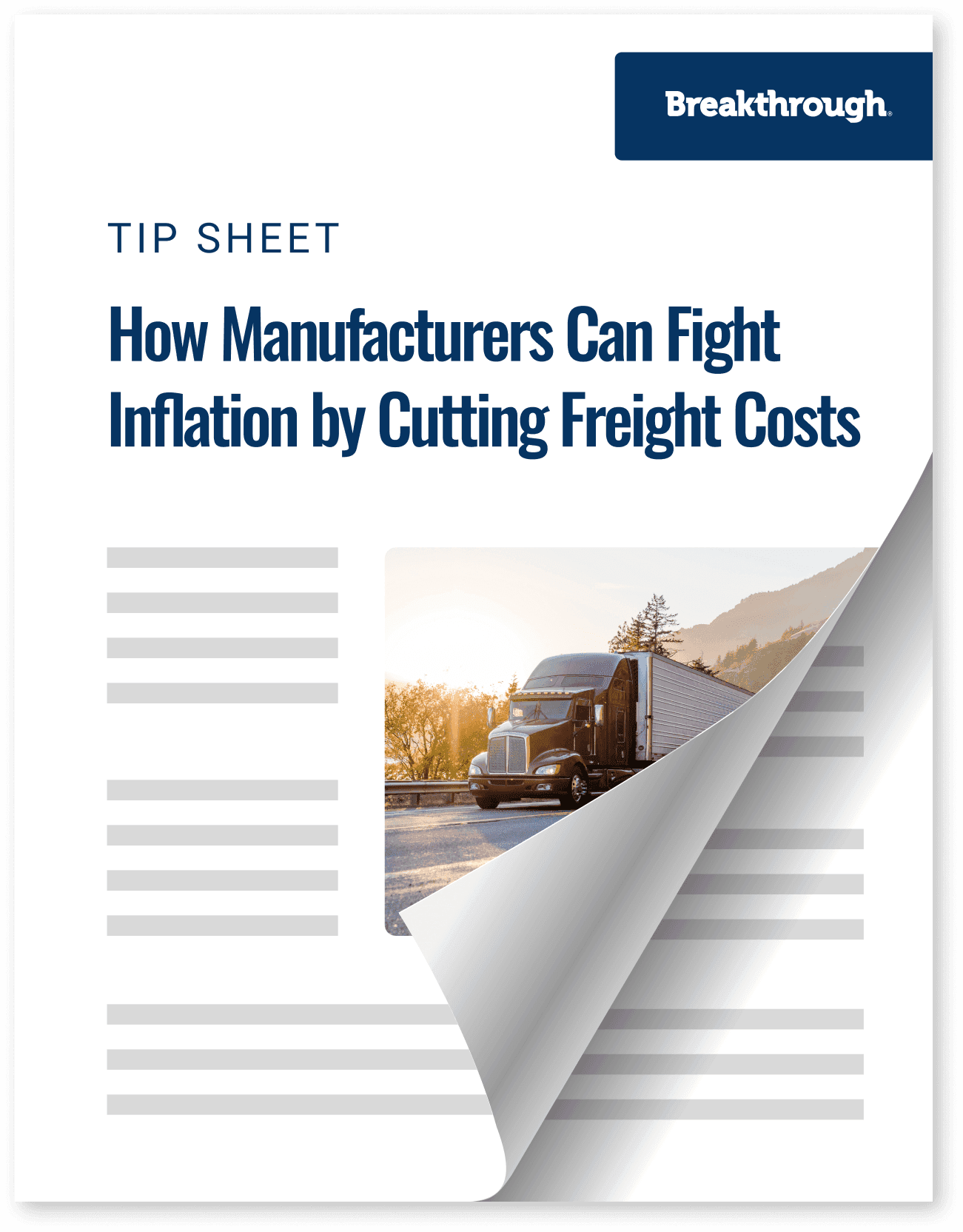制造商如何通过削减运费抗击通胀

热门职位
分享:
目錄
瀏覽目錄以直接跳到您要查找的部分
冠状病毒大流行(COVID-19)造成的全球经济影响继续席卷能源和货运市场。为应对病毒的空前影响而采取的行动不断加强,导致供应链中断、旅行禁令以及全球大多数最大经济体普遍封锁。最近几周,这些供需基本面因素导致能源市场出现历史性暴跌,而需求可能是当前条件下最大的催化剂。
截至 3 月 16 日收盘,基准原油价格每桶下跌约 3.00 美元,跌至 30 美元以下,柴油价格每加仑再下跌 0.09 美元。 由于消费者对许多家庭用品的突然需求,国内货运需求近期逆势下跌。
由于 COVID-19 以及为减缓其扩张而采取的措施,全球对原油和运输燃料的需求持续下降。航空公司削减了多个航班,许多国家都处于某种形式的封锁状态,个人旅行也有所减少。这些努力都导致原油和成品油需求疲软。国际能源机构最近将 2020 年的石油需求预测降低了 110 万桶/天,预计第一季度的石油需求将下降 250 万桶/天。

美国能源信息署还发布了最新的国际原油供需预测,强化了市场失衡可能在未来几个季度持续存在的事实。上图突出显示了这一点,以及可追溯到 2008 年金融危机的其他严重失衡时期。在这些时期中,每个时期都出现了价格看跌的行为,与我们目前看到的情况不相上下,但情况却大相径庭。
3 月初欧佩克+会议的失败很快让位给沙特阿拉伯和俄罗斯的价格战,因为该组织完全放弃了现有的减产计划。这加剧了人们对 COVID-19 需求冲击期间市场供过于求的担忧。欧佩克+"关系的现状仍不明朗,参与者继续抱着 "想生产多少就生产多少 "的心态行事。现在,主要生产商都在争夺市场份额,而不管油价的高低,这在经济上是不可行的。

石油市场目前的价格环境为每桶 35 美元以下,这就提出了一个问题:生产商在面临生产成本和预算要求等不利因素的同时,还能在目前的水平上运营多久。目前,沙特阿拉伯和俄罗斯承诺将产量提高到最大产能,这在很大程度上保持了不变。
例如,美国提出了在现有低价窗口下补充战略石油储备的可能性,以便从市场上清除石油桶,并提供一些价格支持。
COVID-19 和欧佩克+方面相对不变的说法已将美国全国平均柴油批发价格推至每加仑 190 美分以下,这是自 2016 年底以来的首次。自1月1日以来,美国柴油批发价格每加仑下跌了近80美分,3月16日市场的额外跳水使批发价格在3月17日每加仑又下跌了7-10美分。
批发市场的持续下滑和DOE零售指数的延迟调整导致 DOE与批发价格差自2015年1月以来首次超过每加仑90美分。 加拿大柴油批发价格也遵循类似模式,自2017年年中以来首次跌破每升90加元。

在 COVID-19 得到控制、经济出现反弹或原油和成品油供应重新受到限制之前,这种价格下降趋势可能会持续下去。夏季驾驶旺季和炼油厂检修期确实会带来一些季节性上涨,可能会在未来几个季度支撑价格。
COVID-19 的爆发对能源和货运市场的需求都产生了影响,但影响的程度和方向各不相同。自 COVID-19 爆发以来,Breakthrough 客户群的总体货运需求有所增长,但某些行业的增长速度较慢,这取决于大流行病蔓延期间消费者的需求。消费者清空了商店货架,囤积卫生纸、保健品和清洁用品等必需品。 因此,许多行业的货运需求都出现了增长,以应对日常必需品需求的激增。 联邦 服务时间要求也被取消 必需品的服务时间要求也被取消,以帮助满足不断增长的需求。
下图显示,在 COVID-19 爆发之初,"突破 "网络对纸制品和包装消费品的货运需求激增。 自 COVID-19 爆发以来,这两个行业的货运需求增长了约 8 个百分点,比去年的货运量增长了约 14 个百分点。

展望未来,我们预计货运需求在短期内将继续保持强劲。 一旦最初的恐慌情绪消退和/或疫情导致美国企业停产,我们就会看到所有行业的货运需求都将趋于平缓。目前的疫情激增已导致消费者囤积日常用品,这意味着未来对这些商品的需求应该会下降。
有关 COVID-19 带来的燃料和货运管理的所有报道 访问我们的页面。
有关 COVID-19 带来的燃料和货运管理的所有报道 访问我们的页面。